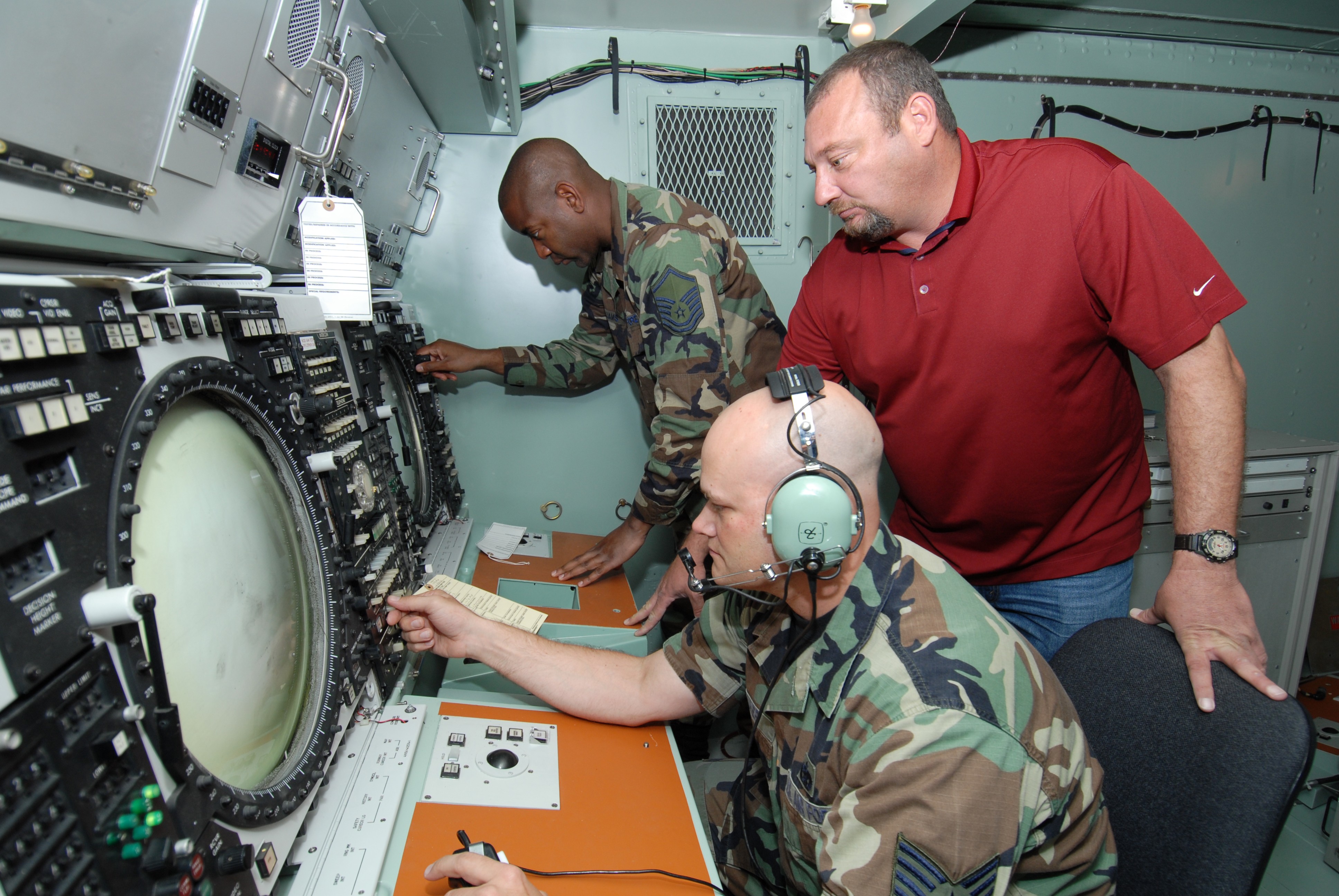TOBYHANNA ARMY DEPOT, Pa. - Tobyhanna employees and active-duty airmen have teamed up to complete the overhaul and resheltering of an Air Force deployable radar unit.
Nine radar maintenance specialists from the 1st Combat Communications Squadron (CCS), Ramstein, Germany, are here to test the operational capability of an AN/TPN-19 Landing Control Central (Radar Set) following a complex cycle of depot-level repair.
In 2006, the Air Force tasked Tobyhanna to replace the two small, legacy shelters that house the airport surveillance and precision approach radars with new, larger shelters and overhaul the two operations facilities.
Since then, an additional four radar sets have arrived here and are in different stages of repair.
"It's very encouraging to see everything working well," said Master Sgt. Christopher Hall, noncommissioned officer in charge of the squadron's radar maintenance section and team chief. "We're almost through the checklist items and I have every confidence in the radar's performance once testing is complete." Further operational tests will be conducted at Tinker Air Force Base, Okla., before the Air Force signs off on the improved system.
The AN/TPN-19 is used by air traffic controllers to identify, sequence, and separate participating aircraft; provide final approach guidance, guidance through air defense corridors and zones, and coordinate identification and intent with local air defense units. The Precision Approach Radar is used to assist pilots with approach and landing at nearby runways, while the Airport Surveillance Radar uses identify friend or foe technology to track aircraft. Data from the radars is monitored by air traffic controllers working in the operations shelter.
To overhaul a system, Tobyhanna employees completely disassemble it, send components to support shops for repair, make any necessary modifications, and test it. Workload often includes diagnosing electrical failures and replacing defective components, testing and repairing all internal wiring and cable harnesses, and blasting, cleaning, priming and complete repainting of the asset.
The improved radar set will be easier to deploy, according to Hall. "Even though the shelters are larger, the equipment has been reconfigured to take less space on transport aircraft, while providing more room for the maintainers to work in," he said.
"We modified two 20-foot shipping containers to house all the radar equipment," said Frank Egidio, production controller with the Intelligence, Surveillance and Reconnaissance Management Division's Air Traffic Control Branch. He noted that the shelters needed "all kinds of reinforcements and modifications" attached to each structure to support the antenna.
"These larger shelters are more structurally sound, functional and provide more workspace for the maintainers," said Dan Kalina, electronics integrated systems mechanic, explaining that the shelters were tailor-made to suit the system's mission.
It's been about five years since the AN/TPN-19 has been at its home station in Germany. According to Hall, the radar was deployed to Southwest Asia in 2004 and came to Tobyhanna from there. During that time, new maintainers were assigned to the squadron and trained to support the system without ever seeing one.
Kalina explained there is a cadre of Air Force specialists who deploy with the AN/TPN-19; maintainers, air traffic controllers, a radio technician, and environmental control and heating, ventilation and air conditioning personnel set up and maintain the system while it's in the field.
"As we go through the checklist, the maintainers are learning how the system works and how components interact with each other," Kalina said. "I've also been providing troubleshooting tips and hints to help them in the field."
"The maintainers have trained hard preparing for the day they'd finally get to work on this radar set," Hall said, adding that they're all ready for the AN/TPN-19 to come home. "Working with Team Tobyhanna has been a great experience. They are true professionals who have done an outstanding job with this project."
Tobyhanna Army Depot is the Defense Department's largest center for the repair, overhaul and fabrication of a wide variety of electronics systems and components, from tactical field radios to the ground terminals for the defense satellite communications network. Tobyhanna's missions support all branches of the Armed Forces.
About 5,600 personnel are employed at Tobyhanna, which is located in the Pocono Mountains of northeastern Pennsylvania.
Tobyhanna Army Depot is part of the U.S. Army CECOM Life Cycle Management Command. Headquartered at Fort Monmouth, N.J., the command's mission is to research, develop, acquire, field and sustain communications, command, control computer, intelligence, electronic warfare and sensors capabilities for the Armed Forces.






Social Sharing